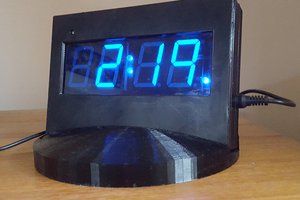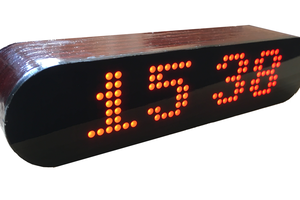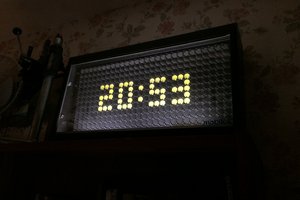RGB P4 Led Matrix Clock is a device, based on ESP32 (Mini 32 or 30P WROOM-32) microcontroller is used to output the information received RGB matrix panel P4 256*128mm (62x32) 1/16 Scan.
An Internet connection via Wi-Fi module helps to synchronize time with NTP server, to receive and display weather and weather forecast, weather icons, today's date in various formats, news, exchange rates, etc. Clock can display predetermined information (reminders, greetings, advertisements, time-schedules etc.) according on schedule. RGB matrix panel P4 allows you to display various colorful graphics and animations.
Clock adjustment and manipulation is performed via WEB-interface or APP LWDevices or LWDevices2.
To control RGB matrix panel P4 (62x32) the SmartMatrix by Pixelmatix library is used.
To power the RGB matrix panel P4 and the controller, you must use any power supply with a voltage of 5V and a power of more than 15W, since the consumption of one panel when displaying white is about 3 A.
Features include:
- Always precise time because of synchronization with NTP time server
- High display brightness
- Getting a weather information and forecast for your city (temperature, barometric pressure, humidity, cloud and wind structure)
- Output of any predetermined information in the form of text, creeping line, graphic icons
- day and night mode
- No buttons – control the clock via WEB-interface from PC, tablet or smartphone
- Brightness and output speed adjustment
- Firmware update via Wi-Fi
- Information display on 3 languages: English, Russian, Bulgarian
- An option to install different alternative Open Source firmware, designed to RGB matrix panel control
- Hackable: Open source hardware and firmware, Displays information read via UART
 LED Lightwell
LED Lightwell
 Kevin Kessler
Kevin Kessler


 pauliusbau
pauliusbau